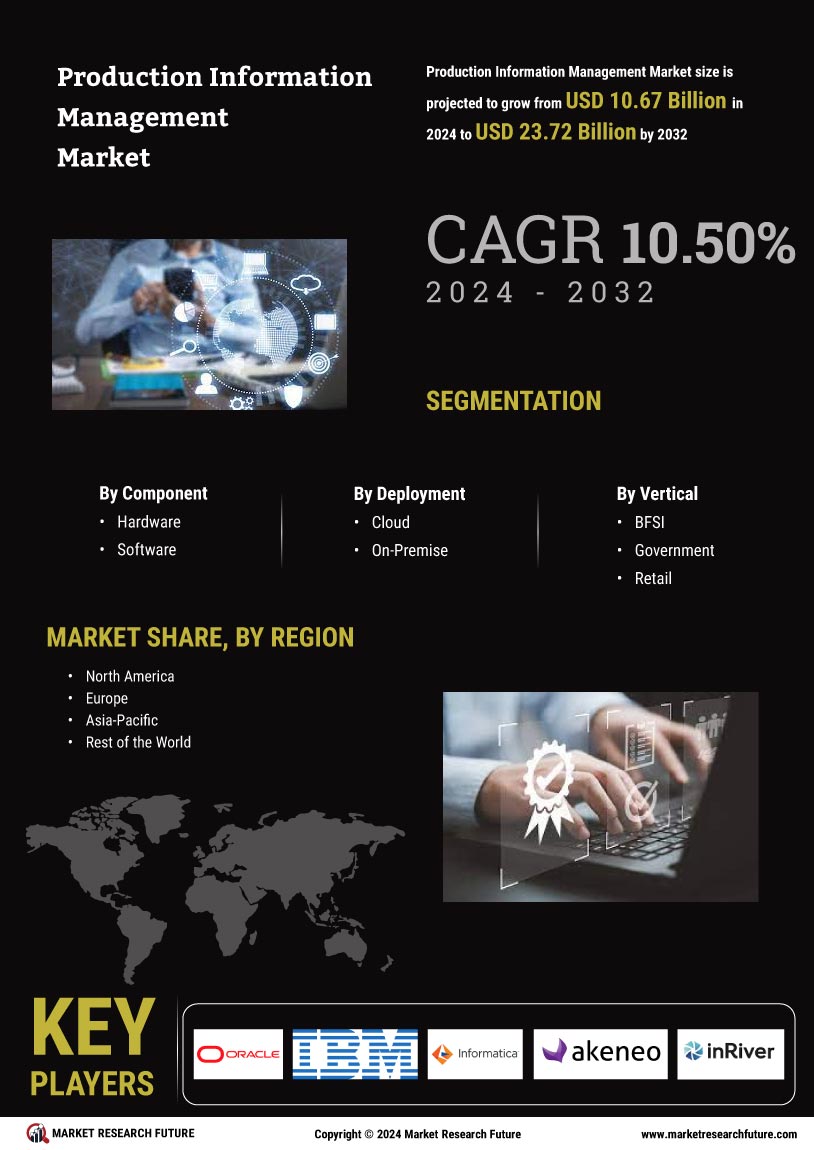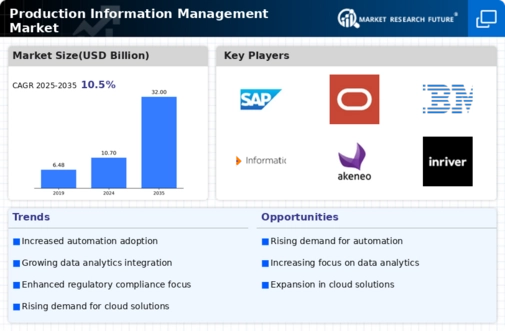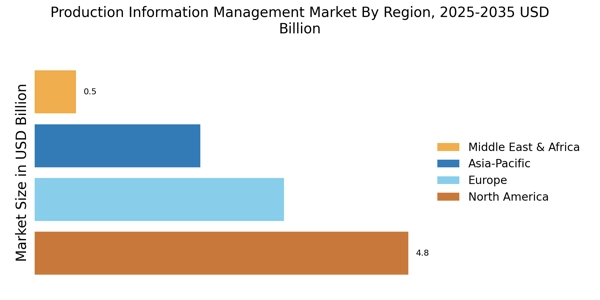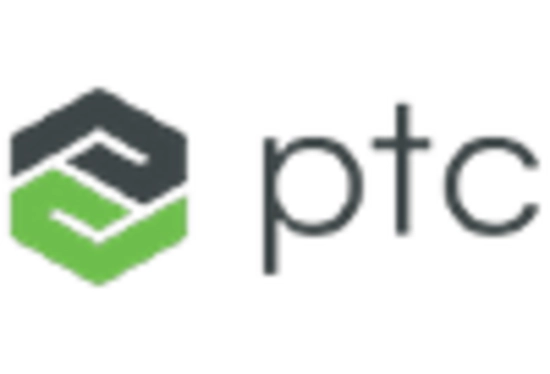Adoption of Cloud-Based Solutions
The shift towards cloud-based solutions is a transformative trend in the Production Information Management Market. Organizations are increasingly migrating their production information management systems to the cloud to benefit from enhanced flexibility, scalability, and cost-effectiveness. This transition allows for seamless collaboration and data sharing across various departments and locations. Market analysis indicates that the cloud segment within the Production Information Management Market is expected to grow at a compound annual growth rate of over 20% in the coming years. This growth underscores the potential of cloud technologies to revolutionize production information management.
Rising Demand for Real-Time Data Access
The Production Information Management Market experiences a notable surge in demand for real-time data access. Organizations increasingly recognize the necessity of having immediate access to production data to enhance decision-making processes. This trend is driven by the need for operational efficiency and the ability to respond swiftly to market changes. According to recent statistics, companies that leverage real-time data can improve their operational efficiency by up to 30%. This demand for immediacy in data access is reshaping the Production Information Management Market, as businesses seek solutions that facilitate timely insights and analytics.
Increased Focus on Operational Efficiency
Operational efficiency remains a pivotal driver within the Production Information Management Market. Companies are continuously striving to optimize their production processes, reduce waste, and enhance productivity. This focus is reflected in the adoption of advanced production management systems that streamline workflows and improve resource allocation. Recent studies indicate that organizations implementing effective production information management strategies can achieve up to a 25% reduction in operational costs. As a result, the Production Information Management Market is witnessing a growing interest in solutions that promote efficiency and effectiveness in production operations.
Growing Importance of Regulatory Compliance
The Production Information Management Market is significantly influenced by the increasing importance of regulatory compliance. As industries face stringent regulations regarding data management and reporting, organizations are compelled to adopt robust production information management systems. These systems not only ensure compliance but also enhance data integrity and security. Recent data suggests that companies investing in compliance-focused production management solutions can mitigate risks and avoid costly penalties. Consequently, the emphasis on regulatory adherence is driving growth within the Production Information Management Market, as businesses seek to align their operations with legal requirements.
Integration of Artificial Intelligence and Automation
The integration of artificial intelligence and automation technologies is emerging as a key driver in the Production Information Management Market. These technologies enable organizations to analyze vast amounts of production data, identify patterns, and make informed decisions. The application of AI in production management can lead to predictive maintenance, reducing downtime and enhancing productivity. Recent forecasts suggest that the AI segment within the Production Information Management Market could witness a growth rate exceeding 15% annually. This trend indicates a shift towards more intelligent and automated production processes, positioning businesses for future success.


















Leave a Comment